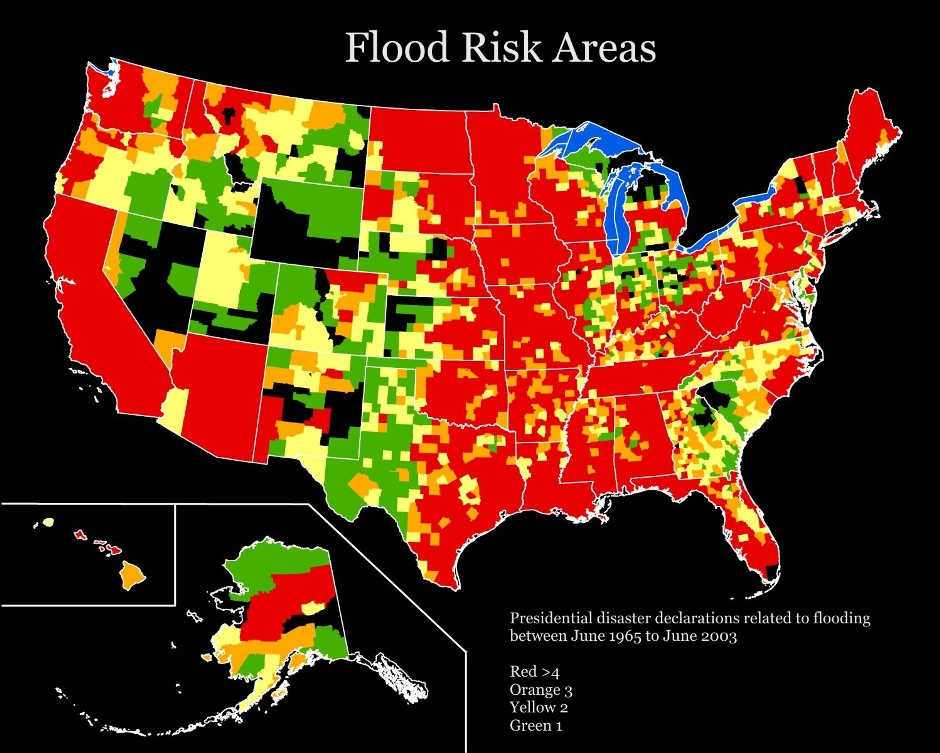Flash floods can occur within a few minutes or hours of excessive rainfall, a dam or levee failure, or a sudden release of water held by an ice jam. Flash floods often have a dangerous wall of roaring water carrying rocks, mud and other debris. Overland flooding, the most common type of flooding event typically occurs when waterways such as rivers or streams overflow their banks as a result of rainwater or a possible levee breach and cause flooding in surrounding areas. It can also occur when rainfall or snowmelt exceeds the capacity of underground pipes, or the capacity of streets and drains designed to carry flood water away from urban areas.
Terminology
- Flood Watch - Flooding is possible. Tune in to NOAA Weather Radio, commercial radio or television for information.
- Flash Flood Watch - Flash flooding is possible. Be prepared to move to higher ground; listen to NOAA Weather Radio or commercial broadcast for information.
- Flood Warning - Flooding is occurring or will occur soon; if advised to evacuate, do so immediately.
- Flash Flood Warning - A flash flood is occurring; seek higher ground on foot immediately.

Before a Flood
- To begin preparing, you should build an emergency kit and make a family communications plan.
- Avoid building in a floodplain unless you elevate and reinforce your home.
- Elevate the furnace, water heater and electric panel in your home if you live in an area that has a high flood risk.
- Consider installing "check valves" to prevent flood water from backing up into the drains of your home.
- Seal walls in basements with waterproofing compounds.
During a Flood
- If a flood is likely in your area, you should::
- Listen to NOAA Weather Radio or to commercial broadcast for the latest information.
- Be aware of stream, drainage channels, canyons and other areas known to flood suddenly. Flash floods can occur in these areas with or without typical warnings such as rain clouds or heavy rain.
- If you must prepare to evacuate, you should do the following:
- SSecure your home. If you have time, bring in outdoor furniture. Move essential items to an upper floor.
- Turn off utilities at the main switches or valves if instructed to do so. Disconnect electrical appliances. Do not touch electrical equipment if you are wet or standing in water.
- If you have to leave your home, remember these evacuation tips:
- Do not walk through moving water. Six inches of moving water can make you fall. If you have to walk in water, walk where the water is not moving. Use a stick to check the firmness of the ground in front of you.
- Do not drive into flooded areas. If floodwaters rise around your car, abandon the car and move to higher ground if you can do so safely. You and the vehicle can be swept away quickly.
After the Flood
- Use extreme caution when entering buildings; there may be hidden damage, particularly in foundations.
- Avoid floodwaters; water may be contaminated by oil, gasoline or raw sewage.
- Service damaged septic tanks, cesspools, pits and leaching systems as soon as possible. Damaged sewer systems are serious health hazards.
- After it is safe to return, your safety should be your primary priority inspect utilities. Turn off the electricity at the main breaker or fuse box, even if the power is off in your community. That way, you can decide when your home is dry enough to turn it back on.

